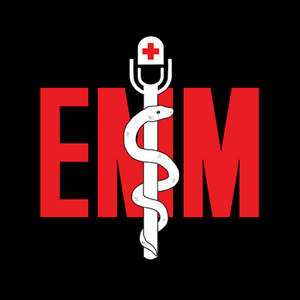Episode 934: Subendocardial Ischemia
Contributor: Travis Barlock MD Educational Pearls: What is the ST segment? The ST segment on an ECG represents the interval between the end of ventricular depolarization (QRS) and the beginning of ventricular repolarization (T-wave). It should appear isoelectric (flat) in a normal ECG. What if the ST segment is elevated? This is evidence that there is an injury that goes all the way through the muscular wall of the heart (transmural) This is very concerning for a heart attack (STEMI) but can be occasionally caused by other pathology, such as pericarditis What if the ST segment is depressed? This is evidence that only the innermost part of the muscular wall of the heart is becoming ischemic This has a much broader differential and includes a partial occlusion of a coronary artery but also any other stress on the body that could cause a supply-and-demand mismatch between the oxygen the coronaries can deliver and the oxygen the heart needs This is called subendocardial ischemia What else should you look for in the ECG to identify subendocardial ischemia? The ST-depressions should be at least 1 mm The ST depressions should be present in leads I, II, V4-6 and a variable number of additional leads. There is often reciprocal ST elevation in aVR > 1 mm The most important thing to remember when you see subendocardial ischemia is…history Still, keep all cardiac causes on your differential, such as unstable angina, stable angina, Prinzmetal angina, etc. Also consider a wide array of non-cardiac causes such as severe anemia, severe hypertension, pulmonary embolism, COPD, severe pneumonia, sepsis, shock, thyrotoxicosis, stimulant use, DKA, or any other state that lead to reduced oxygen supply to the subendocardium and/or increased myocardial oxygen demand. References Birnbaum, Y., Wilson, J. M., Fiol, M., de Luna, A. B., Eskola, M., & Nikus, K. (2014). ECG diagnosis and classification of acute coronary syndromes. Annals of noninvasive electrocardiology : the official journal of the International Society for Holter and Noninvasive Electrocardiology, Inc, 19(1), 4–14. https://doi.org/10.1111/anec.12130 Buttà, C., Zappia, L., Laterra, G., & Roberto, M. (2020). Diagnostic and prognostic role of electrocardiogram in acute myocarditis: A comprehensive review. Annals of noninvasive electrocardiology : the official journal of the International Society for Holter and Noninvasive Electrocardiology, Inc, 25(3), e12726. https://doi.org/10.1111/anec.12726 Cadogan, E. B. a. M. (2024, October 8). Myocardial Ischaemia. Life in the Fast Lane • LITFL. Retrieved December 7, 2024, from https://litfl.com/myocardial-ischaemia-ecg-library/#:~:text=ST%20depression%20due%20to%20subendocardial,left%20main%20coronary%20artery%20occlusion. Summarized by Jeffrey Olson, MS3 | Edited by Meg Joyce & Jorge Chalit, OMS3 Donate: https://emergencymedicalminute.org/donate/

